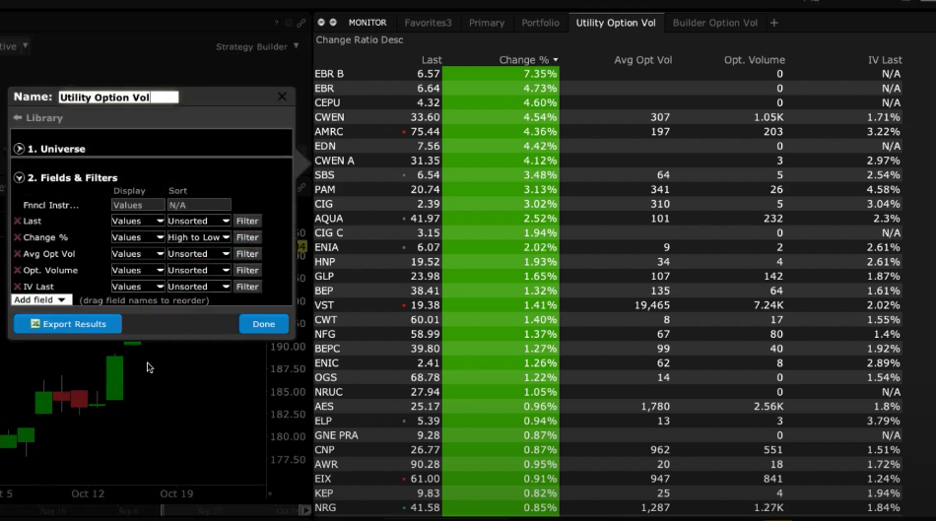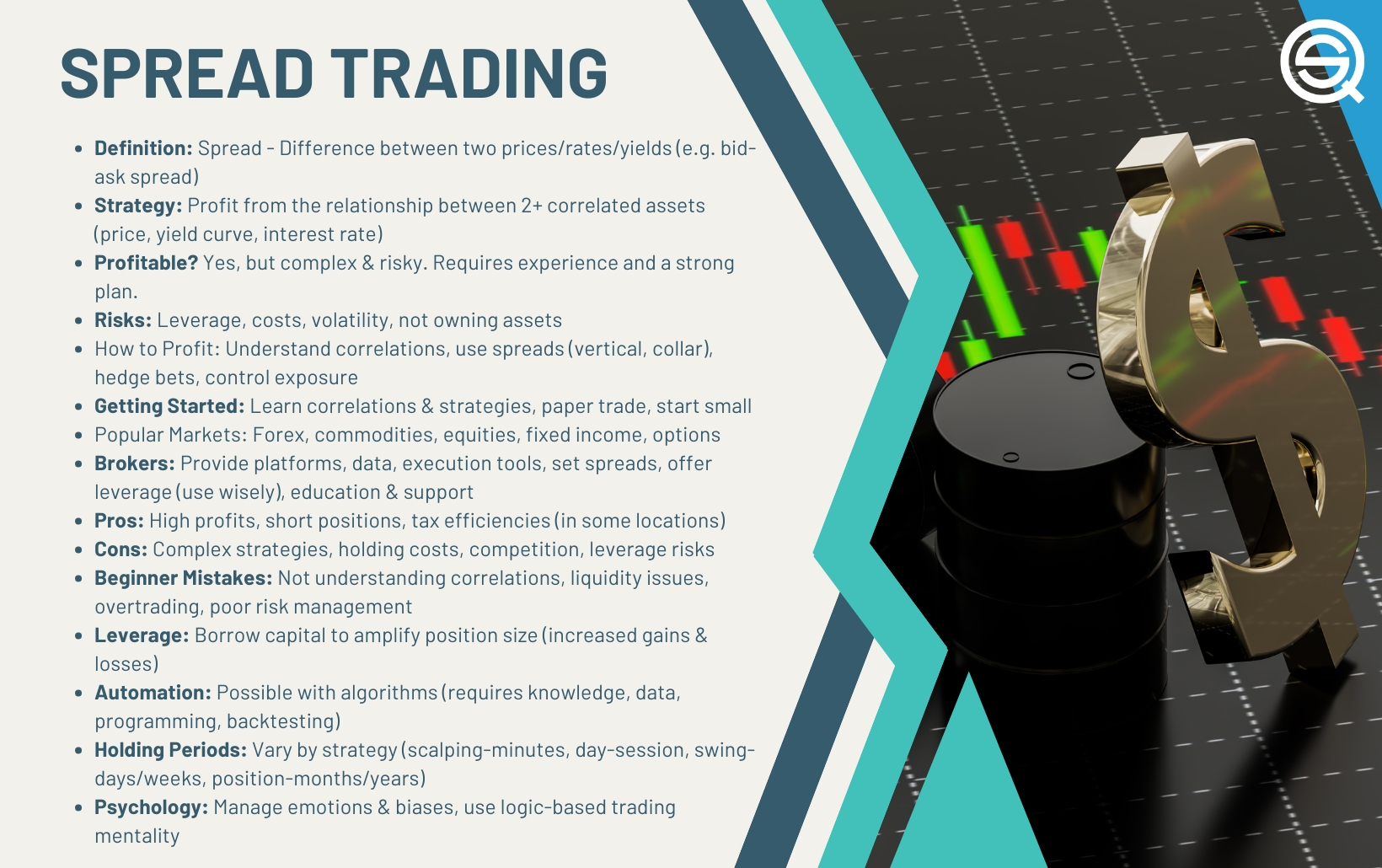Did you know that more people have been bitten by sharks than have successfully day traded options? While the thrill of the market can seem daunting, understanding the nuances of day trading options compared to other instruments like stocks, futures, and forex is essential for success. In this article, we dive into the key differences, advantages, and risks of day trading options, along with insights on liquidity, commissions, and effective strategies. We’ll also explore the learning curve and resources available for beginners. Equip yourself with the knowledge from DayTradingBusiness to navigate the vibrant world of day trading options confidently.
What are the key differences between day trading options and stocks?
Day trading options involves trading contracts that give the right to buy or sell an underlying asset, while day trading stocks involves buying and selling shares of a company.
Key differences include:
1. Leverage: Options often provide higher leverage, allowing traders to control a larger position with less capital compared to stocks.
2. Complexity: Options trading is more complex due to various strategies and factors like implied volatility and expiration dates, whereas stock trading is more straightforward.
3. Time Sensitivity: Options have expiration dates, making time decay a critical factor; stocks can be held indefinitely.
4. Profit Potential: Options can yield higher percentage returns, but they also carry greater risk of losing the entire investment.
5. Liquidity: Stocks generally have higher liquidity, while certain options can have wider bid-ask spreads, affecting execution prices.
Understanding these differences is crucial for effective day trading in either market.
How do options trading strategies compare to futures trading?
Options trading strategies offer flexibility with limited risk, allowing traders to hedge or speculate with defined loss potential. Futures trading, on the other hand, involves higher risk due to leverage and requires a larger capital commitment. Options can provide various strategies like spreads and straddles tailored to market conditions, while futures are typically more straightforward, focusing on directional bets. Overall, options are often better for risk management, while futures may appeal to those seeking larger, more immediate profits.
What are the advantages of day trading options over forex trading?
Day trading options offers several advantages over forex trading. First, options provide leverage, allowing traders to control larger positions with less capital. This can amplify profits (and losses). Second, options have defined risk; you can set a maximum loss upfront through strategies like buying calls or puts. Third, options trading allows for various strategies like spreads and straddles, enabling traders to profit in different market conditions. Finally, options often have lower transaction costs compared to forex, enhancing profitability on trades.
What risks should I consider when day trading options?
When day trading options, consider these risks:
1. High Volatility: Options can experience rapid price swings, increasing the chance of loss.
2. Time Decay: Options lose value as expiration approaches, impacting profitability.
3. Liquidity Issues: Some options may have low trading volume, making it hard to enter or exit positions.
4. Complex Strategies: Advanced strategies can amplify risks if not properly understood.
5. Market Conditions: Sudden market changes can lead to unexpected losses.
6. Emotional Stress: The fast pace of day trading can lead to impulsive decisions and emotional fatigue.
Weigh these risks carefully against the potential rewards of day trading options.
How does liquidity in options compare to other trading instruments?
Liquidity in options can vary significantly compared to stocks or ETFs. Generally, liquid options have tight bid-ask spreads and high trading volumes, making it easier to enter or exit positions quickly. However, many options may have lower liquidity than popular stocks, leading to wider spreads and increased slippage.
In day trading, liquid stocks often provide more consistent price movement and tighter execution. Conversely, options can offer leverage and limited risk, but you must be cautious of liquidity issues, especially with out-of-the-money strikes or near expiration. Overall, while options can be lucrative, they require careful attention to liquidity compared to other trading instruments.
What are the best options trading platforms for day traders?
The best options trading platforms for day traders include:
1. TD Ameritrade: Offers thinkorswim, a powerful trading platform with advanced charting and analysis tools.
2. E*TRADE: Features a user-friendly interface and comprehensive options analysis tools.
3. Charles Schwab: Provides StreetSmart Edge, known for its research and customizable features.
4. Interactive Brokers: Ideal for experienced traders, it offers low commissions and a robust trading platform.
5. Robinhood: Suitable for beginners, it has a simple app with commission-free trading.
These platforms cater specifically to day traders with tools and features tailored for quick, effective options trading.
How can I choose between day trading options and ETFs?
Choose day trading options if you want higher leverage and the potential for larger profits in a shorter timeframe. Options can offer quick returns, but they also come with higher risk and complexity.
On the other hand, day trading ETFs provides more stability and diversification, making it easier to manage risk. ETFs typically have lower volatility and simpler strategies, appealing if you prefer a less aggressive approach.
Consider your risk tolerance, trading style, and market knowledge. If you're comfortable with fast-paced trading and understand options strategies, go for options. If you prefer a steadier, more straightforward method, stick with ETFs.
What is the learning curve for day trading options versus stocks?

The learning curve for day trading options is generally steeper than for stocks. Options trading involves understanding complex concepts like strike prices, expiration dates, and volatility. In contrast, stock trading focuses more on price movement and market trends. A trader needs to grasp strategies like spreads and hedging in options, which adds layers of complexity. Overall, expect to invest more time in education and practice for options than for stocks.
How do commissions impact day trading options compared to other instruments?
Commissions significantly affect day trading options because they can eat into profit margins more than with stocks or ETFs. Options typically have higher per-contract fees, which can add up quickly with frequent trades. This means that even small price movements may not be profitable after commissions are deducted. In contrast, trading stocks might incur lower fees or even commission-free trades, making it easier to profit from small price changes. Consequently, day traders need to account for these costs when choosing options over other instruments.
What are the tax implications of day trading options versus futures?
Day trading options is typically taxed as short-term capital gains, meaning profits are taxed at your ordinary income tax rate. If you hold options for less than a year, the gains fall under this category.
In contrast, day trading futures can qualify for the 60/40 rule, where 60% of gains are taxed at the long-term capital gains rate and 40% at the short-term rate, regardless of holding period.
Both trading types may require you to report gains on Schedule D, but futures trading offers a potential tax advantage due to the 60/40 treatment. Always consult a tax professional for personalized advice.
Learn about Tax Implications of Forex Day Trading
How do market volatility and day trading options interact?

Market volatility significantly impacts day trading options. High volatility increases the potential for large price swings, offering day traders more opportunities to profit from quick trades. Options, with their leverage, allow traders to capitalize on these fluctuations with less capital compared to stocks. However, high volatility also raises the risk of rapid losses, making it crucial for day traders to manage risk effectively. In contrast, trading other instruments like stocks may not provide the same level of leverage or potential for quick gains that options do. Therefore, understanding how volatility affects options trading is essential for maximizing profits while minimizing risk.
Learn about The Impact of Market Volatility on Day Trading
## What are the key differences between day trading options and other financial instruments?
Day trading options involves buying and selling options contracts within the same trading day to capitalize on short-term price movements. Compared to other instruments like stocks or futures, options provide leverage, allowing traders to control larger positions with less capital. However, options also carry higher risk due to their time sensitivity and potential for total loss.
Learn more about: Understanding Options in Day Trading
Learn about Differences Between Forex and Other Day Trading Markets
What are the most effective indicators for day trading options?
The most effective indicators for day trading options include:
1. Volume: High trading volume indicates strong interest and can signal potential price movements.
2. Open Interest: This shows the number of outstanding contracts and can help assess market sentiment.
3. Implied Volatility (IV): Higher IV often leads to larger price swings, which is crucial for options traders.
4. Moving Averages: Short-term moving averages (like the 5-day or 10-day) help identify trends.
5. Relative Strength Index (RSI): This momentum oscillator indicates overbought or oversold conditions.
6. Bollinger Bands: These show volatility and potential price reversals based on standard deviations from a moving average.
Using these indicators can enhance your decision-making in day trading options compared to other instruments.
How can I manage risk when day trading options compared to stocks?
To manage risk when day trading options compared to stocks, use these strategies:
1. Define Your Risk Tolerance: Set a clear limit on how much you’re willing to lose per trade, typically 1-2% of your capital.
2. Use Stop-Loss Orders: Implement stop-loss orders to automatically exit positions at predetermined price levels, minimizing losses.
3. Position Sizing: Calculate the appropriate size of each trade based on your total capital and risk tolerance, adjusting for the higher volatility of options.
4. Diversify: Avoid concentrating your trades in a few options; spread your risk across different assets or sectors.
5. Trade Liquid Options: Focus on options with high liquidity to ensure tighter spreads and easier entry/exit points.
6. Monitor Implied Volatility: Be aware of how changes in implied volatility can affect option prices and your potential risk.
7. Use Spreads: Consider strategies like vertical spreads to limit risk while still allowing for profit potential.
8. Stay Informed: Keep up with market news and trends that could impact the underlying asset, as options can be more sensitive to such changes than stocks.
By implementing these strategies, you can effectively manage risk in day trading options.
Learn about How to Use Technical Analysis for Options Day Trading
What are the common pitfalls in day trading options versus other instruments?

Common pitfalls in day trading options include high volatility leading to rapid loss, complexity of pricing models, and lower liquidity compared to stocks. Traders often underestimate the impact of time decay, which can erode profits quickly. Additionally, options have multiple variables to consider, such as implied volatility and the Greeks, making them more challenging than trading stocks. Emotional decision-making can also lead to poor trades, as the fast pace can cause panic or overconfidence. In contrast, trading stocks typically involves simpler strategies and clearer price movements, reducing some of these risks.
Learn about Common Mistakes in Day Trading Options
How does margin trading work for options compared to stocks?
Margin trading for options involves borrowing funds to buy more options than you could with just your capital. In options trading, you can use margin to leverage your position, requiring a smaller upfront investment compared to the full cost of purchasing stock.
With stocks, margin requires at least 50% of the purchase price as collateral, while options can often require less due to their inherent leverage. However, options have time decay, meaning their value can decrease as expiration approaches, which adds risk.
Additionally, margin calls can occur if your account value drops significantly, requiring you to deposit more funds or sell positions. In summary, options margin trading allows for greater leverage and flexibility, but it also carries unique risks and requires careful management.
What resources are available for beginners in options day trading?
Beginners in options day trading can utilize several resources:
1. Online Courses: Platforms like Udemy and Coursera offer courses specifically on options trading.
2. Books: “Options Made Easy” by Guy Cohen and “Trading Options for Dummies” provide foundational knowledge.
3. Webinars: Many brokerages, like TD Ameritrade and E*TRADE, host free webinars on options trading.
4. Forums and Communities: Websites like Reddit (r/options) and Trade2Win have active discussions and advice.
5. Simulators: Tools like thinkorswim’s paperMoney allow practice without real money.
6. YouTube Channels: Channels like tastytrade and Option Alpha offer valuable insights and strategies.
7. Brokerage Resources: Most brokerages provide educational articles, videos, and tools tailored for options trading.
These resources can help beginners understand the intricacies of day trading options effectively.
Conclusion about Day Trading Options vs. Other Instruments
In summary, day trading options offers distinct advantages and challenges compared to other financial instruments like stocks, futures, and forex. Understanding the key differences, including strategies, risks, liquidity, and costs, is crucial for making informed decisions. By leveraging the right resources and platforms, traders can maximize their potential. For those seeking expert guidance, DayTradingBusiness provides valuable insights to navigate the complexities of options trading effectively.
Learn about Frequently Asked Questions About Day Trading Options